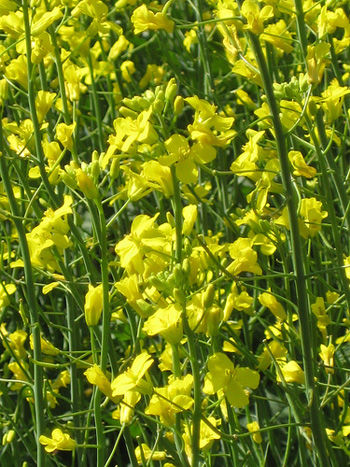
About 80 percent of canola growing along roadsides in North Dakota contains genes that have been modified to make the plants resistant to common weed-killers, according to a team of University of Arkansas researchers.
The discovery of escaped gene-altered canola has some experts concerned that it could lead to herbicide-resistant "super weeds" that farmers would have difficulty controlling. Also, the plants could be moving onto the fields of organic farmers. In Australia, one farmer who lost his organic certification has sued his neighbor, saying genetically modified canola contaminated his organic crops.
"Canola is really the poster child of transgene escape at the moment," says Norman Ellstrand, a plant geneticist at the University of California, Riverside.
Transgenes are pieces of genetic code that are placed in an organism during genetic engineering. They confer some trait that the organism wouldn't normally have - in this case, resistance to a commonly used herbicide.
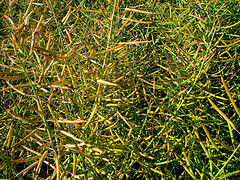
Genetically modified food is highly controversial worldwide. While it is commonly produced in countries such as the U.S., Brazil and Canada, biotech crops remain unpopular in much of Europe and parts of Africa. In recent years, environmental organizations and consumers have voiced concerns over the safety of these crops. No differences have been found in their nutritional value, but some scientists call into question the lack of independent research. Biotech companies have conducted most of the risk studies.
Very few genetically modified products are marketed directly to consumers - much of it becomes animal feed. Last fall, Monsanto began selling seed for modified sweet corn, its first product developed for the consumer market.
In their search for escaped canola, University of Arkansas biologist Cynthia Sagers and colleagues went to North Dakota, which accounts for 92 percent of all canola grown in the U.S.
They traversed nearly 3,500 miles of roads in the state. Every five miles they got out of the car and counted all canola plants in sight. Using chemical test strips, they examined the roadside canola for proteins related to herbicide resistance. Of 288 plants tested, 231 had the proteins, which means they had modified genes, according to the study published in October in the journal Plos One.
It was the first evidence of a genetically modified agricultural crop escaping into the wild in the United States, although previous work already showed that gene-altered grass had spread in Oregon.
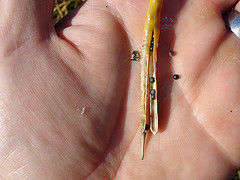
Sagers suspects that most of it was the result of seed spilling off trucks. It was growing both near and far from farmers' fields across the state.
What's more, a small number of the plants they tested were resistant to multiple herbicides. Some of them - less than one percent - had both Roundup Ready and Liberty Link genes. Roundup Ready, manufactured by Monsanto, makes crops resistant to glyphosate, while Liberty Link, made by Bayer Crop Science, conveys resistance to another herbicide, glufosinate. The discovery of that combination in the roadside plants is a sign that they have undergone genetic changes in the wild.
"This is more than a case of seeds bouncing off trucks," Ellstrand said. "You have combinations of transgenes that don't occur in commercial seed - some evolution has occurred."
But industry says it's not a problem. Crops and related weed species have been exchanging genetic material for centuries, and some crops, such as canola, are known to grow feral where seed is spilled.
"It's a biological phenomenon that was around way before biotech," says Karen Batra, director of communications for BIO, a group that represents the agriculture industry.
Still, the introduction of resistance traits to weeds has some scientists and farmers worried.
Weeds that could tolerate multiple herbicides spell economic troubles for farmers, who would have to resort to more aggressive modes of weed control, such as tilling fields and using greater amounts and more toxic varieties of herbicide, according to Sagers.
Kevin Griswold, a Wisconsin dairy farmer, plants 2,350 acres of genetically modified corn and alfalfa each year to feed a 2,000-cow operation. Using Roundup Ready on crops has allowed him to cut his production costs and has been better for the environment, he said. He tills less and uses less atrazine, a more toxic herbicide.
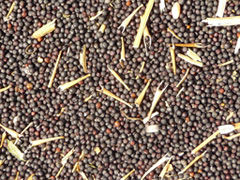
In North Dakota, farmers take steps to keep stray canola plants out of other crops. Good management practices, such as periodically switching herbicides, have kept problems with escaped genetically modified canola to a minimum, said Ron Beneda, a crop systems specialist at the North Dakota State University Cavalier County Extension.
For organic growers, spread of genetic material could be a problem. Certified organic farmers are not allowed to use genetically engineered seed under the U.S. Department of Agriculture's National Organic Program.
"It's pretty clear that it's very difficult to prevent a certain level of gene flow from field to field," said Charles Benbrook, chief scientist at the Organic Center in Boulder, Colo., an organization that promotes the benefits of organic food and farming.
According to Benbrook, it can be hard for an organic grower to avoid cross contamination, especially in areas where genetically engineered crops are growing nearby.
The cost of keeping a crop free of this contamination falls largely on the grower, Benbrook said. Organic farmers often have to plant slightly earlier or slightly later than neighbors that may be planting a genetically modified crop to avoid cross-pollination, resulting in lower yields. They also must take special steps during harvesting and bear the costs of testing to make sure the crop is pure.
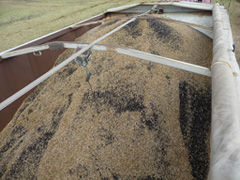
But farmers looking to sell organic products overseas face more scrutiny. "Many countries, including those in the European Union and Japan, put very stringent limits on GE contamination," said Benbrook.
Some farmers use buffer zones to try to prevent the flow of genetic material from their fields.
Scientists are looking for new techniques, too.
Bioconfinement is an approach that's being looked at, said Neal Stewart, a plant biologist at the University of Tennessee, Knoxville. For instance, scientists are looking at ways to create crops that can't be fertilized by pollen from genetically engineered plants.
"Biotechnology has a lot to give to food production," said Sagers. "But we need to make sure we're doing due diligence to risk assessment before modified products are approved for commercial release."
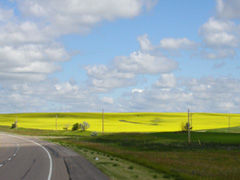
William Vencill, a crop scientist at the University of Georgia, said one in 10 million weeds will naturally have a trait that makes it resistant to a given herbicide.
"When you use the same herbicide in the same place year after year, you kill all the weeds that are sensitive and start selecting for resistant individuals," said Vencill.



" For instance, scientists are looking at ways to CREATE crops that can't be fertilized by pollen from genetically engineered plants. "
If "scientists" are CREATING "crops that can't be fertilized by pollen", wouldn't this make this new crop bio-engineered too?